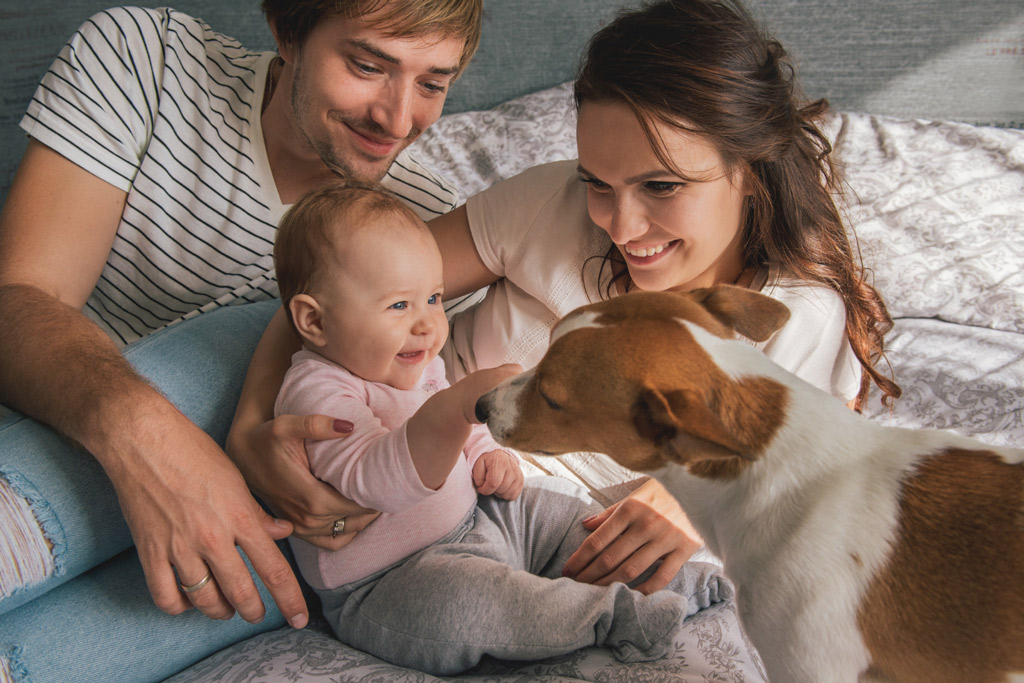
If you are having a baby or adopting a kid, you might wonder how to prepare your dog to welcome the new member of the family.
How can you introduce your dog to your baby?
This is a concern for many dog owners and baby parent(s). With each new baby, there’s an adjustment period for everyone in the family, including your dog. But with advance planning, you can avoid problems before they occur.
How to Get Your Dog Ready for the New Arrival
Before your newborn arrives, there are many things that you can do to make the transition as smooth as possible.
These are things you can do to prepare your dog before your baby arrives:
#1 – Schedule a Checkup
A visit to the veterinarian will ensure that your dog is in good health and that there are no reasons for concern.
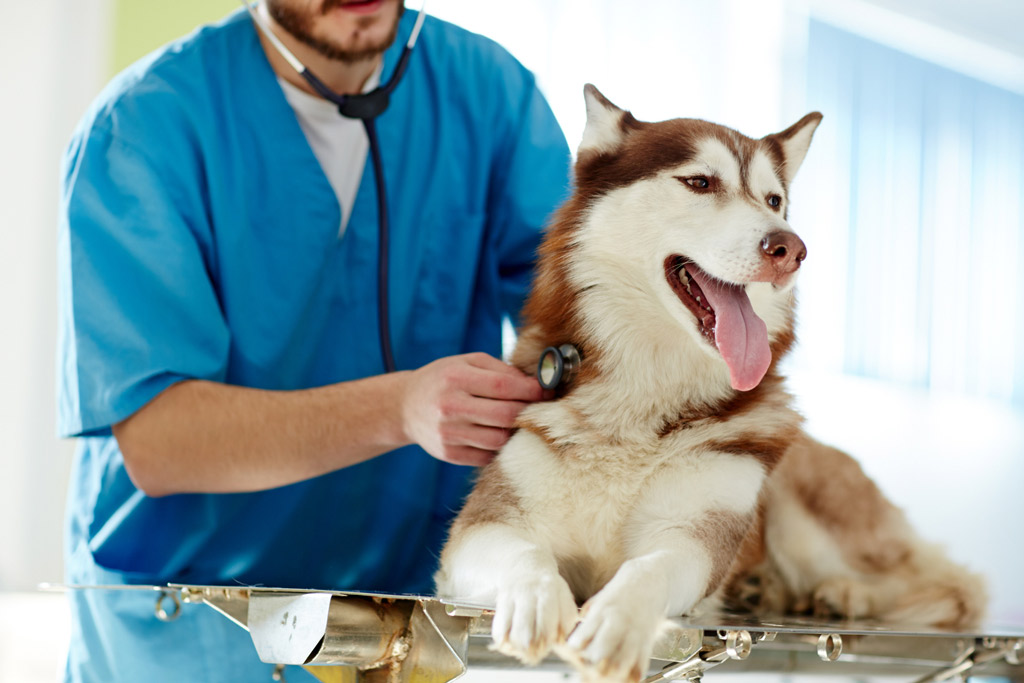
#2 – Consider Further House-Training
It’s essential to evaluate your dog’s obedience training; for dogs, this means responding to commands, walking obediently on a lead, no aggressive behaviour, etc.
“If you do not want the dog and cat to go into the nursery, start training them to stay out of the room before the baby arrives — and yes, cats are trainable too.”
Judy Morgan, a veterinarian.
Also, continue to instil a no-begging policy if you haven’t done so before. Parents often worry that their dog will jump up near the baby.
“The easiest way to avoid this is to train your dog to stop begging for scraps.”
Klein.
Just remember that shouting “No!” or “bad dog!” rarely works. We believe that it’s beneficial to reward him or her good behaviour every time with praise, caresses or a healthy treat.
A positive-reward training method encourages your dog to repeat good behaviour. If you want to know more, check out the Dog Training 101 blog post.
#3 – Familiarize Your Dog with Baby Stuff
There are a few things you can do to get your dog used to the idea of a baby in the house. Alison Birken Streit, a veterinarian, advises that you allow your dog to get familiar with baby toys, blankets, and other items, and hear them, as well.
This way your dog will associate and familiarise with his or her smell the moment your newborn arrives home.
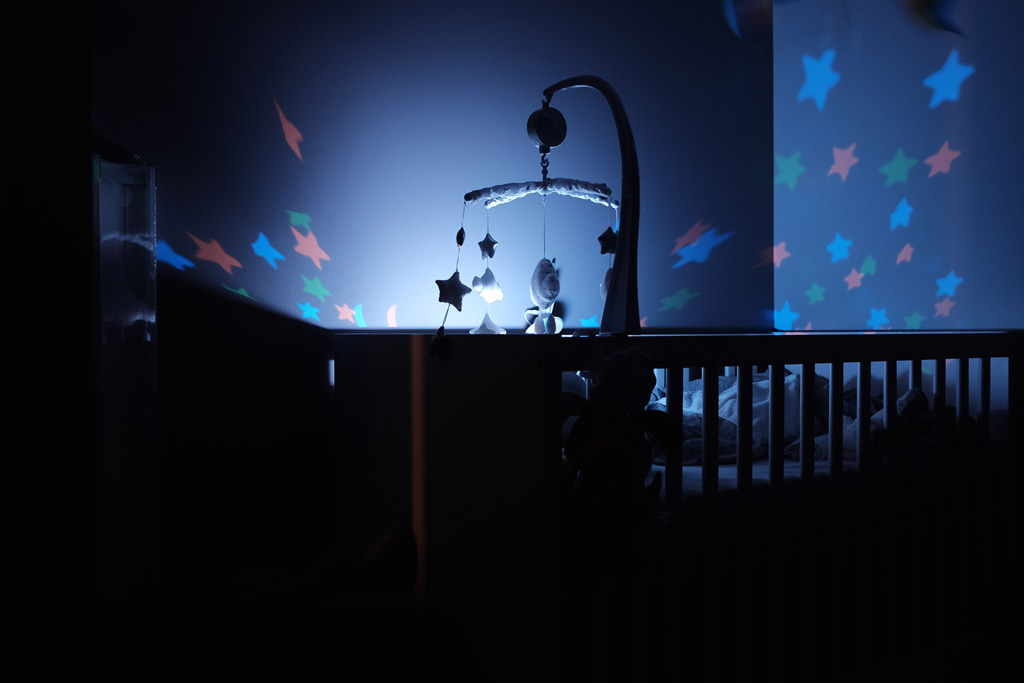
#4 – Play Baby Sounds
Out of the ordinary noises like a crying baby or even the squeak of baby toys may send your dog into a panic. So you can gradually get them used to the sound by playing a recording of baby-making noises, laughing and also crying.
You can download “Baby Sounds for Pets” playlist from Itunes, for example, and play it for a few minutes. Give your pooch lots of love and treats during these sessions.
#5 – Socialize Your Dog with Kids
It’s important that your dog is well socialized in general, i.e., he or she can interact safely with other pets, adults and also kids. You can encourage these encounters by inviting friends and family with children to come over.
Children may appear very strange creatures to dogs. They are loud, fast, erratic and unpredictable — characteristics that can startle or frighten a dog.
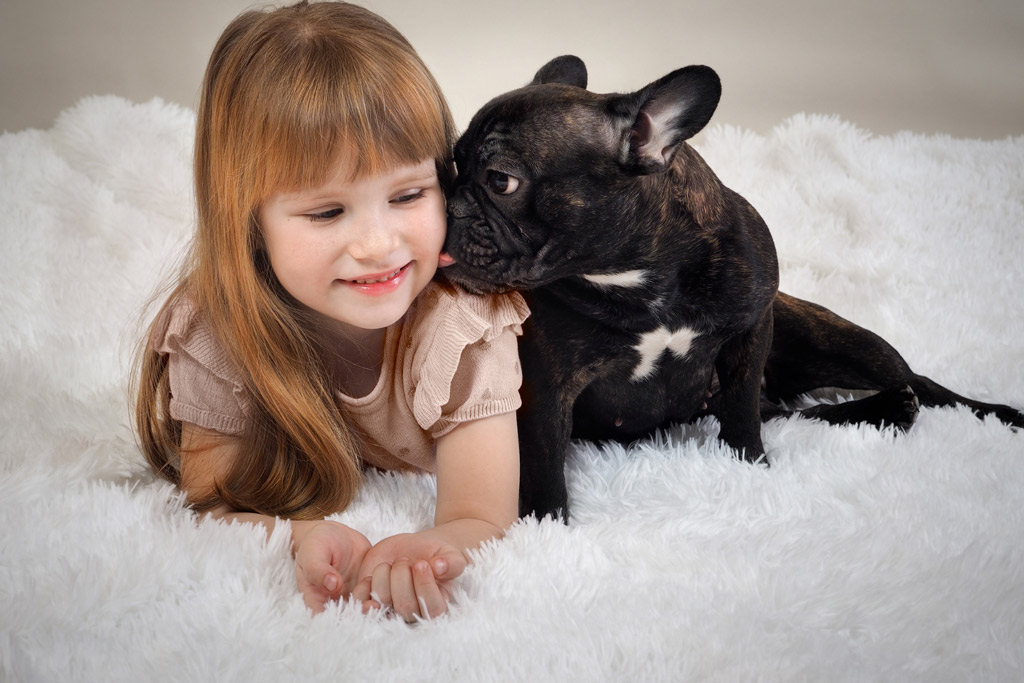
#6 – Play Pretend
You can hold a lifelike doll so your dog adjusts to seeing you holding someone close.
Also, you can consider taking your dog on walks with the stroller before your baby arrives.
“It helps to establish the pace you’re comfortable with so your dog knows exactly what’s expected when it’s out with the baby. Adjust the leash so that your dog can walk next to you at all times—not in front or in back of you.”
Mary Remer, a certified personal dog trainer.
#7 – Adjust the Schedule Gradually
A kid brings many changes to a household, and it’s best for your dog if you can make many of these changes during your pregnancy or adoption process.
Dogs are sensitive to routines, and by making changes now, you minimize the chances of your dog resenting the baby when she or he arrives.
That’s why it is better to assume that you will have less time for your dog and adjust accordingly. You should consider whether your dog’s walking, exercise, or feeding schedules will change, and adjust them now.
#8 – Offer Your Dog a Quiet Zone
If your furry friend doesn’t have an assigned space, this would be a good time to take that into consideration. It is important that your dog has a cosy place where they can retreat when tired or in need of some quiet time.
Their quiet zone should include:
- A crate or playpen with a comfy bed. You can also use a baby gate to block off other areas.
- Some mind-stimulating toys to keep them busy (and keep their mouth occupied with something other than barking).
- Optional: a white noise machine to mask exterior sounds and produce soothing soundscapes.

#9 – Consider Getting Help for Unwanted Behaviour
If your dog is acting out of place before your baby arrives, consider enrolling your furry friend in obedience classes, hiring a trainer to come to your home or doing an online course to train your dog – which I talk about more about in my favourite dog training method.
Also, if you don’t want your dog sleeping in your bed or jumping on the furniture anymore, consider further house-training ASAP.
“Don’t introduce the new baby and new rules at the same time. Your pet may misbehave and also have a negative reaction toward the baby.”
Jonathan Klein, founder of “I Said Sit!”, a training and boarding facility for dogs in Los Angeles.
#10 – Choose What Games to Play
Most dogs love to play rough, so you should start avoiding wrestling or playing tug-of-war before your baby arrives. This helps when you are playing with your dog and your baby is around.
“Your dog may attempt to play these rough games whenever the baby is around unless you put a stop to them now.”
Christine Hayden, vet technician for Kroger Pet Insurance.
Since dog and baby toys might look similar to your dog, start tidying up your dog’s toys after playing inside the house. You can even reserve playtime for the garden or on walks.
This will make it easier for your dog to understand that play occurs when you produce their toys, rather than when they pick up a toy in the house (your baby’s toy). It also prevents your baby from picking up your dog’s toys and putting them in their mouth.
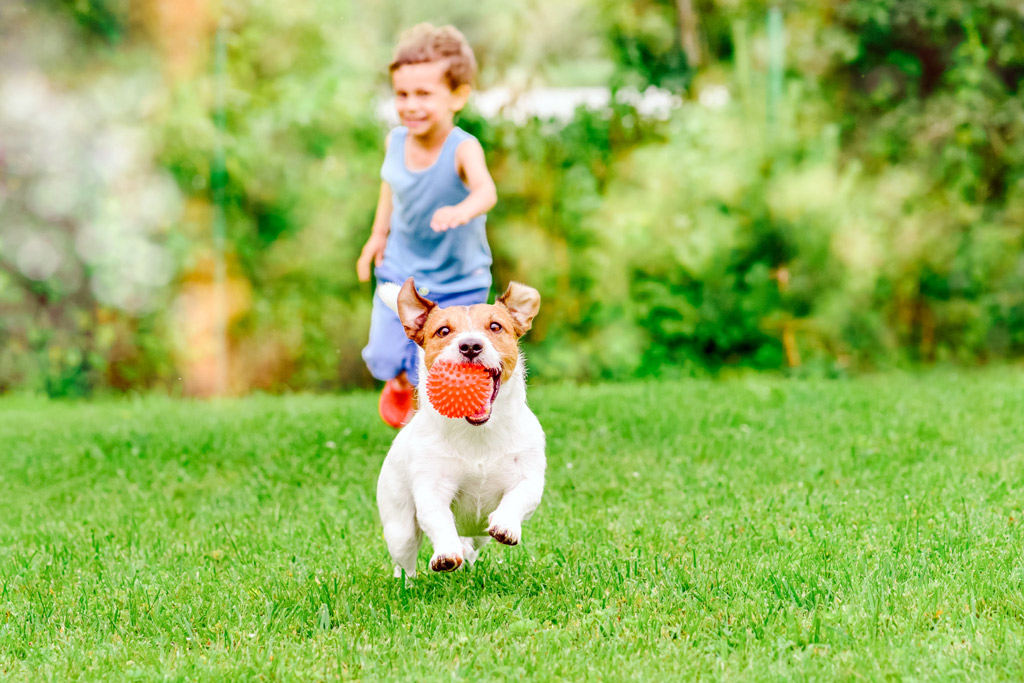
Welcoming Your Baby Home and the Introduction of Your Dog to Baby
On your baby’s first day in the new house, be sure to implement these tips for a stress-free meet and greet.
#1 – Bring Home the Blanket
After the mom delivers the baby, your partner, friend or family member can take the baby’s blanket home so your dog can sniff it.
By the time you come home with your baby, your furry friend is already familiar with the baby’s scent and feels calmer when welcoming the baby home.
#2 – Welcome Your Dog First
On the first day of returning home with your baby, it’s a great start to say hello to your dog without your baby being present.
Naturally, your pooch might be excited with your return, so after your dog has calmed down, have your partner or family member present your little one to your dog. Let your furry friend smell your baby.
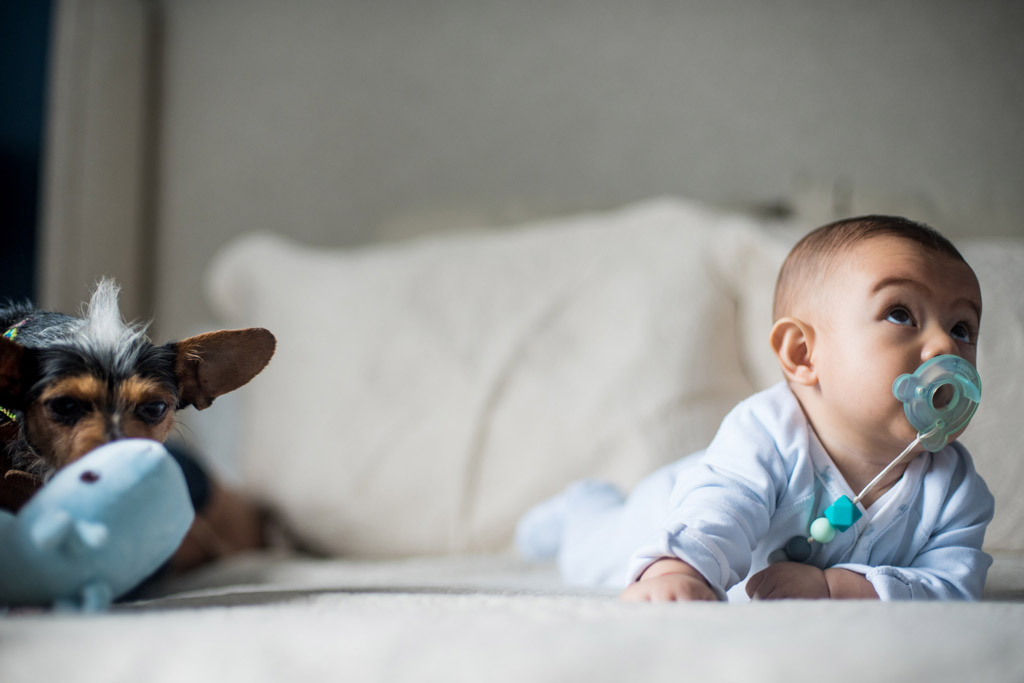
#3 – Start Off Small
For the initial introduction, keep your dog on a lead in a sit/stay position, rewarding him or her for the good behaviour by petting, treating or/and praising.
Gradually, your dog and baby can be brought closer together. It’s important that they bond from the beginning. You can hold your baby near your dog, and caress and talk soothingly to your furry friend.
Your dog will sniff the baby. Let him or her start with your baby’s feet and make small progressions, avoiding initial face-to-face contact.
#4 – Don’t Exclude Your Dog
“The most common problem we see is an animal that is acting up because it’s not getting the same attention it was used to before the baby.”
Jonathan Klein, founder of “I Said Sit!”, a training and boarding facility for dogs in Los Angeles.
It’s important to remember to include your dog as much as possible when you’re around your baby.
Associate your baby’s presence with positive, enjoyable experiences for your dog. When your pooch is behaving well around your baby, give her lots of gentle praise and tasty treats.
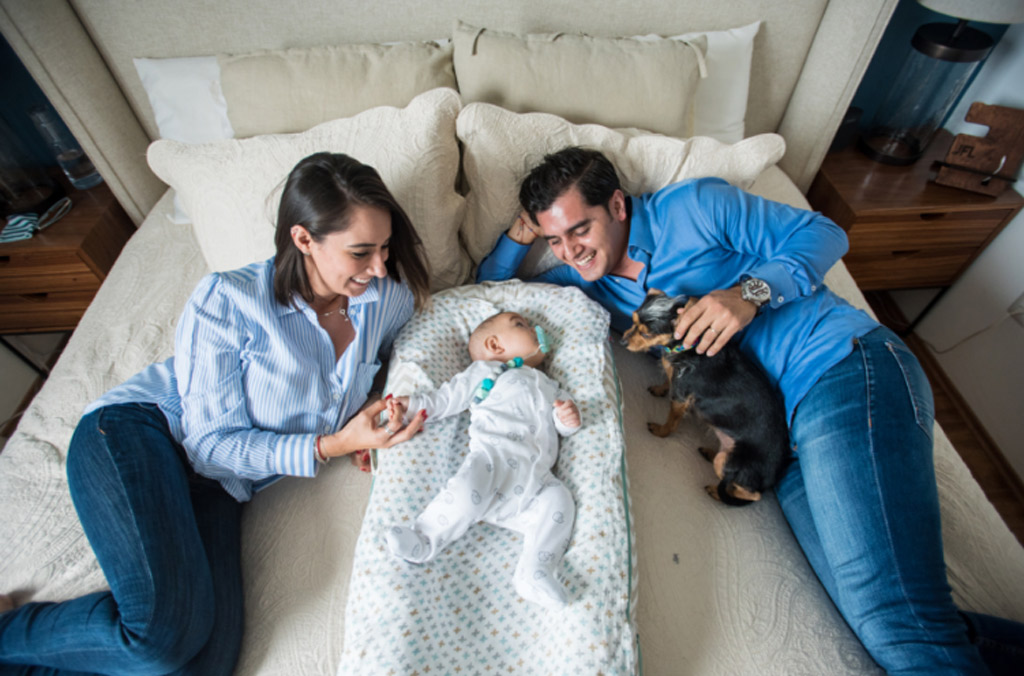
#5 – Don’t Forget Snuggle Time
Also, stick with your dog’s regular routine as much as possible, and try your best to spend a little one-on-one time with your furry friend each day.
If there are two adults in the house, whilst one is feeding the baby, for example, the other can hold the dog. This way you show your pooch that he or she is still important.
#6 – Take It Slowly
Some dogs might need more time to get used to the new member of the family. So take it easy and always supervise the interactions between your baby and dog.
Finally, caring for your dog is still equally as important for keeping a healthy and happy dog; check out The 5 pillars to a happy and healthy dog for more.

